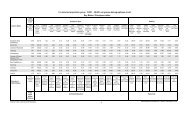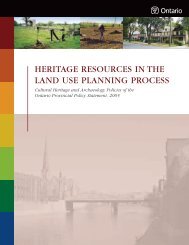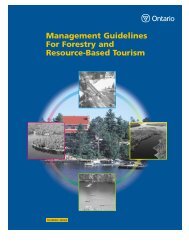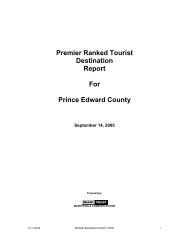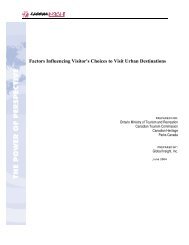Forest Operations on Crown Land - Ministry of Tourism
Forest Operations on Crown Land - Ministry of Tourism
Forest Operations on Crown Land - Ministry of Tourism
- No tags were found...
Create successful ePaper yourself
Turn your PDF publications into a flip-book with our unique Google optimized e-Paper software.
3. There is also an alternative strategy applicable to the special c<strong>on</strong>diti<strong>on</strong> <strong>of</strong> undisturbedforest floors with shallow soils (e.g., combined A and B horiz<strong>on</strong>s <strong>of</strong> less than 5 cm) setout in Secti<strong>on</strong> 2.1.9 <strong>of</strong> the Standards and Guidelines. This strategy has limitedapplicati<strong>on</strong> in forest operati<strong>on</strong> areas.Note that if n<strong>on</strong>e <strong>of</strong> the special c<strong>on</strong>diti<strong>on</strong>s listed above apply, the c<strong>on</strong>sultant archaeologistis required to follow the general standards and guidelines for test pit surveys set out insecti<strong>on</strong>s 2.1.2 and 2.1.3 <strong>of</strong> the Standards and Guidelines.Although the general and special c<strong>on</strong>diti<strong>on</strong> standards for Stage 2 provide minimumrequirements which the c<strong>on</strong>sultant archaeologist must satisfy, it is recognized that thesestandards may not address every situati<strong>on</strong>. It may be necessary in some instances to useother approaches to resp<strong>on</strong>d to unusual c<strong>on</strong>diti<strong>on</strong>s. However, all c<strong>on</strong>sultant archaeologistsmust discuss any approaches that depart from the Standards and Guidelines with <strong>Ministry</strong><strong>of</strong> <strong>Tourism</strong> and Culture staff before applying them in the field.Other approaches are likely to be acceptable to the ministry where they do not c<strong>on</strong>flictwith the standards and are c<strong>on</strong>sistent with the general goal <strong>of</strong> the c<strong>on</strong>servati<strong>on</strong> <strong>of</strong>archaeological sites. C<strong>on</strong>sultant archaeologists who depart from the Standards andGuidelines must clearly describe the rati<strong>on</strong>ale for the change in approach, the new strategyand any discussi<strong>on</strong>s with the <strong>Ministry</strong> <strong>of</strong> <strong>Tourism</strong> and Culture in the report that iseventually filed for the project (see Secti<strong>on</strong> 8 below). Secti<strong>on</strong> 2.10 <strong>of</strong> the bulletin ProjectInformati<strong>on</strong> Forms (PIFs) and the Archaeological Report Review Process provides guidance forlicensees who are c<strong>on</strong>sidering alternate fieldwork strategies to those allowable under theStandards and Guidelines.5 Mitigating impacts to archaeological sitesThe outcome <strong>of</strong> a Stage 2 test pit survey may be the identificati<strong>on</strong> <strong>of</strong> archaeological siteswithin an area <strong>of</strong> archaeological potential. When a site is discovered Secti<strong>on</strong> 2.1.3 <strong>of</strong> theStandards and Guidelines provides the opti<strong>on</strong> <strong>of</strong> undertaking additi<strong>on</strong>al Stage 2 test pittingin order to determine whether the archaeological site has cultural heritage value or interestbased <strong>on</strong> criteria set out in the Standards and Guidelines and the archaeologist'spr<strong>of</strong>essi<strong>on</strong>al judgment. The outcome <strong>of</strong> this additi<strong>on</strong>al testing is an understanding <strong>of</strong>whether Stage 3 testing <strong>of</strong> the site may be necessary.The acceptable strategies for mitigating impacts to archaeological sites identified duringStage 2 survey and that are <strong>of</strong> further c<strong>on</strong>cern are:Following a Stage 2 assessment, the forest resource licence holder may opt to protectthe site without the Stage 3 testing that would determine its cultural heritage value orinterest and spatial boundaries. If so, a c<strong>on</strong>servative approach to site protecti<strong>on</strong> isArchaeological Assessments for <str<strong>on</strong>g>Forest</str<strong>on</strong>g> <str<strong>on</strong>g>Operati<strong>on</strong>s</str<strong>on</strong>g> <strong>on</strong> <strong>Crown</strong> <strong>Land</strong>s | 9


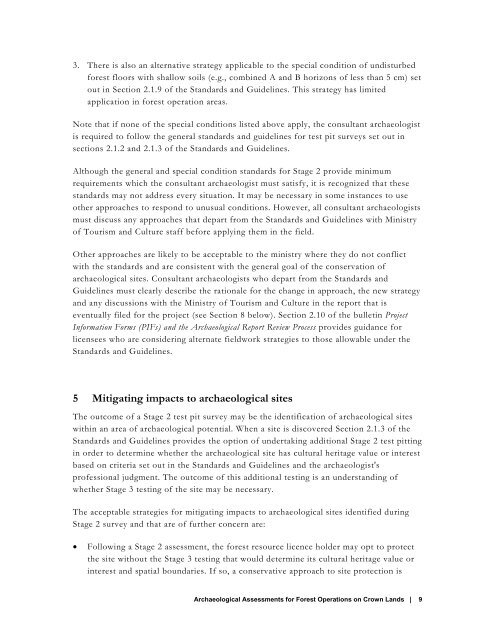
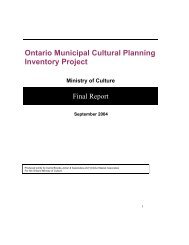
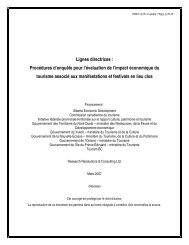
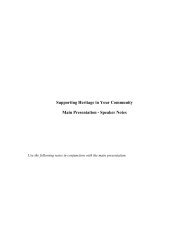
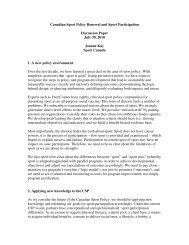
![THIS AGREEMENT made this [date], between [name of owner] (the ...](https://img.yumpu.com/49827605/1/158x260/this-agreement-made-this-date-between-name-of-owner-the-.jpg?quality=85)

